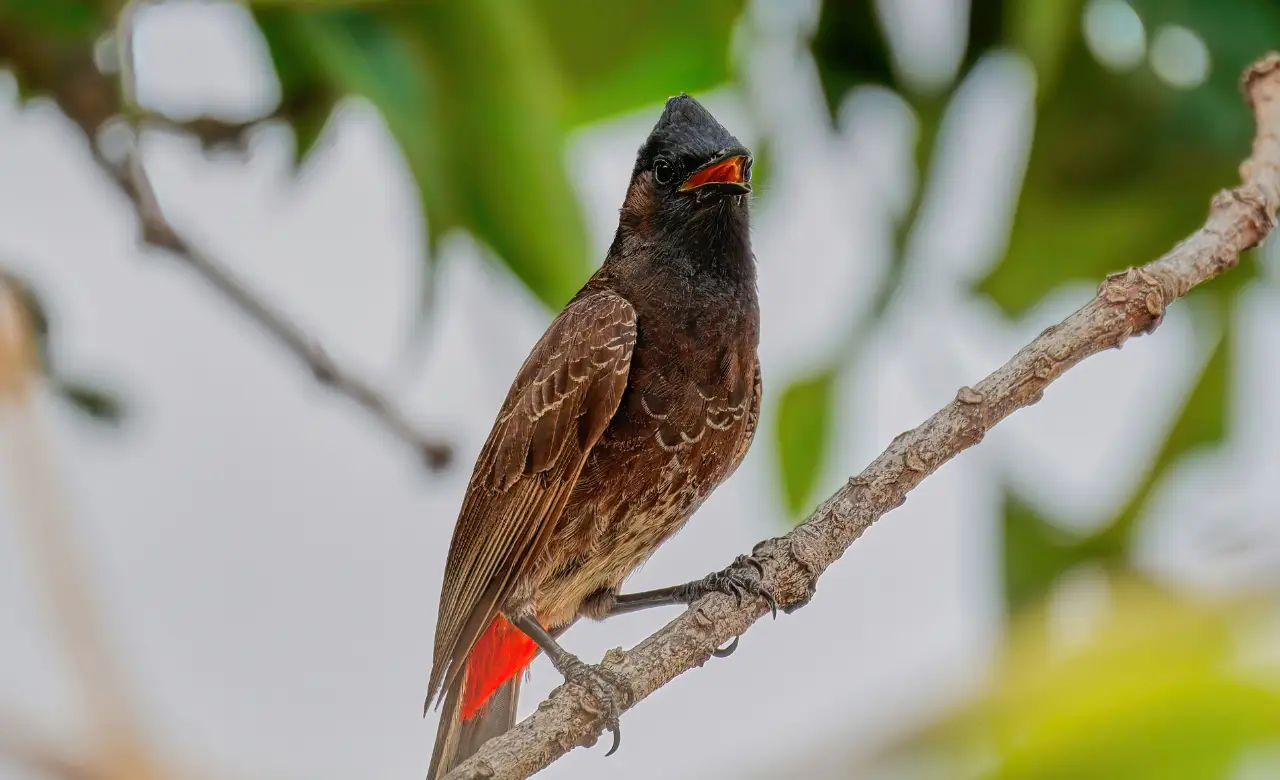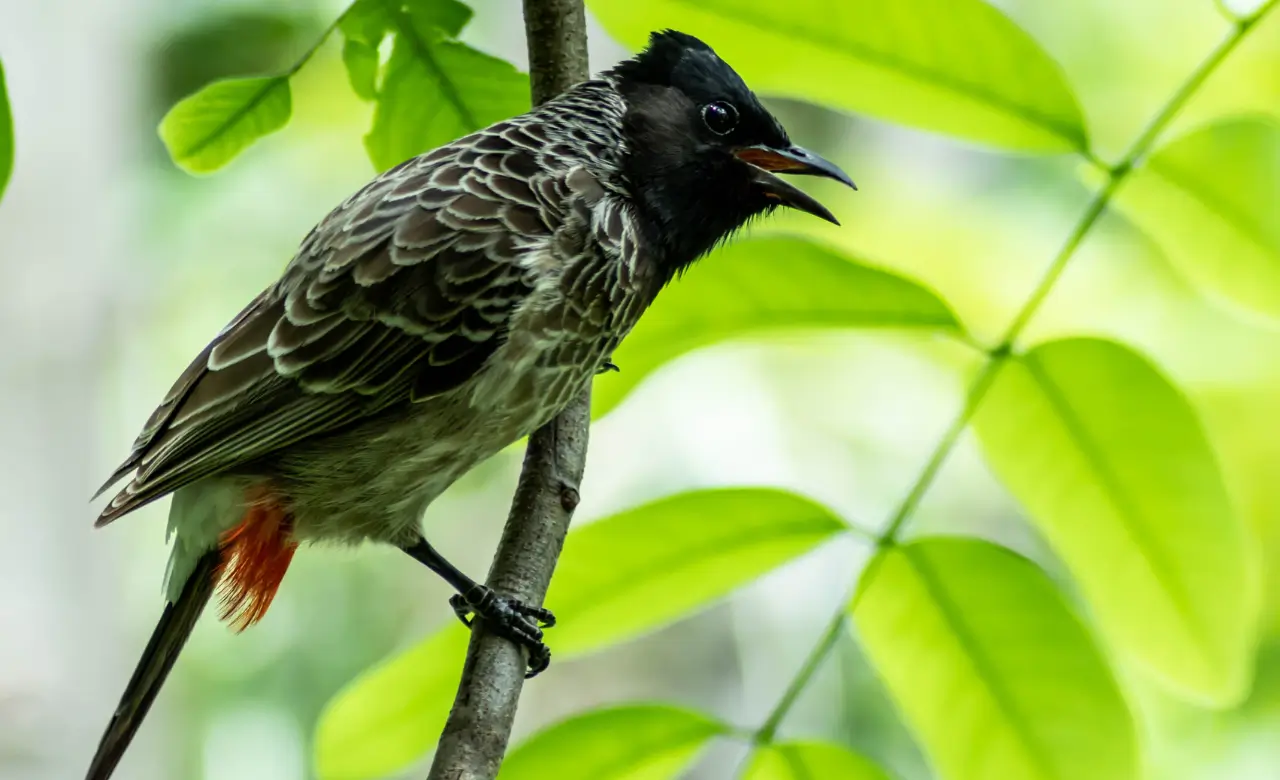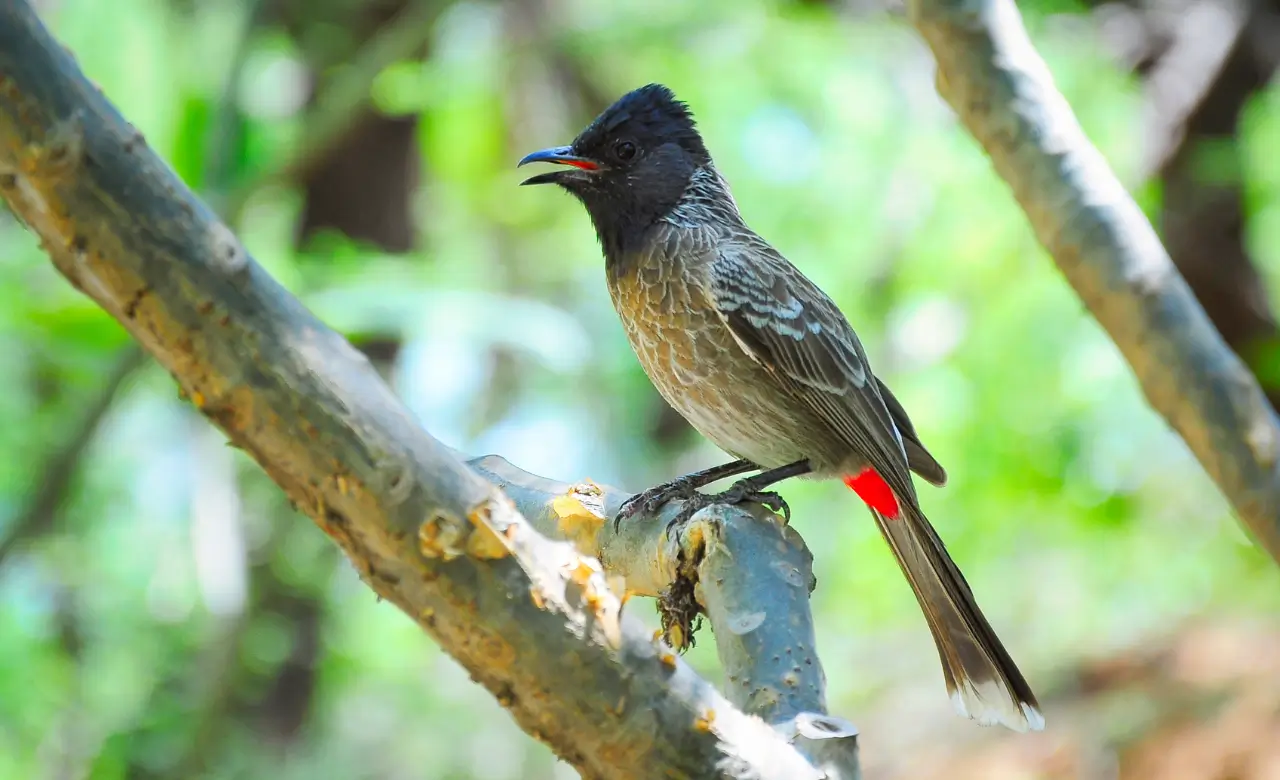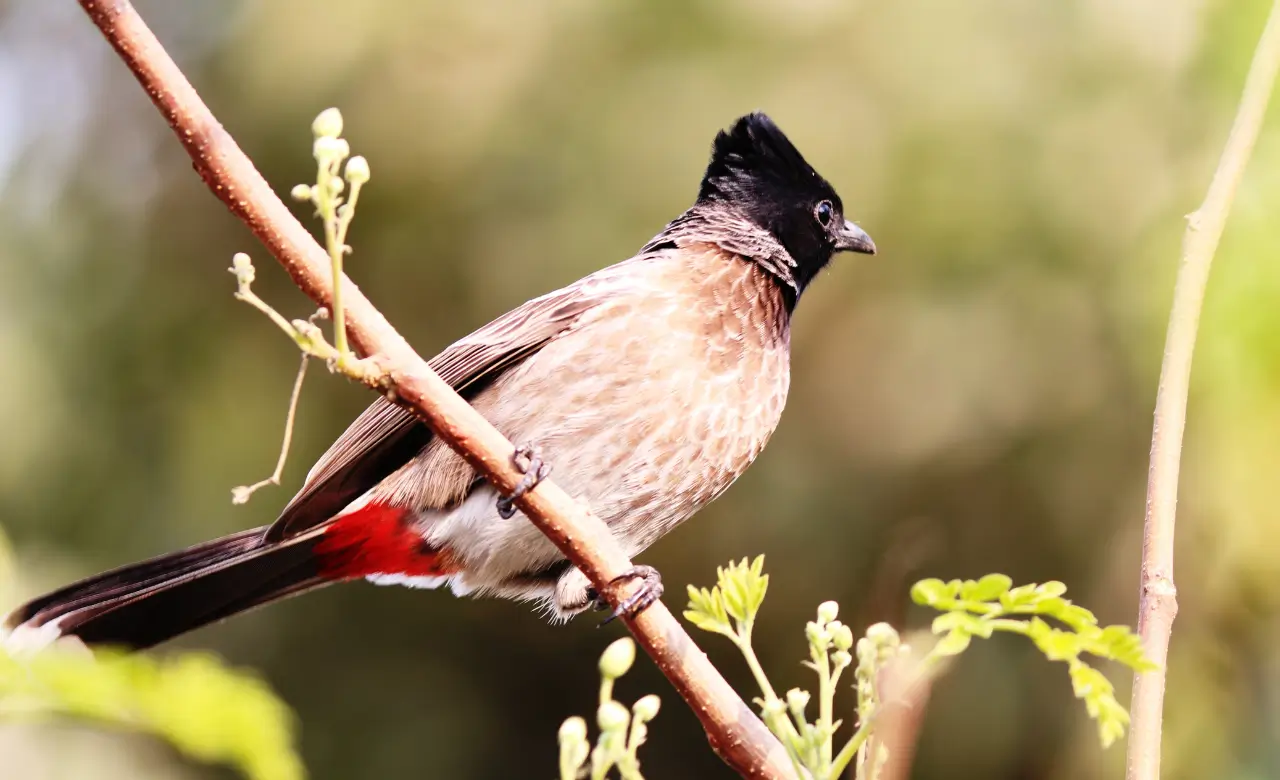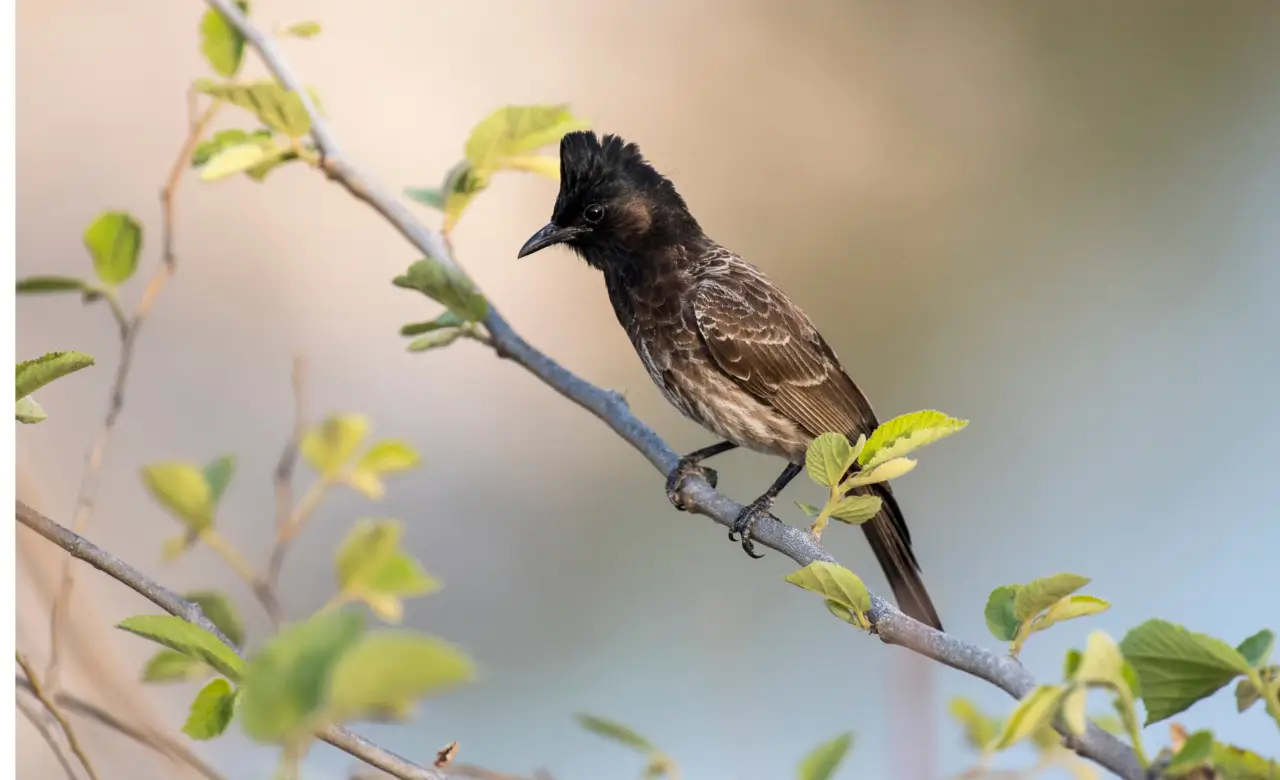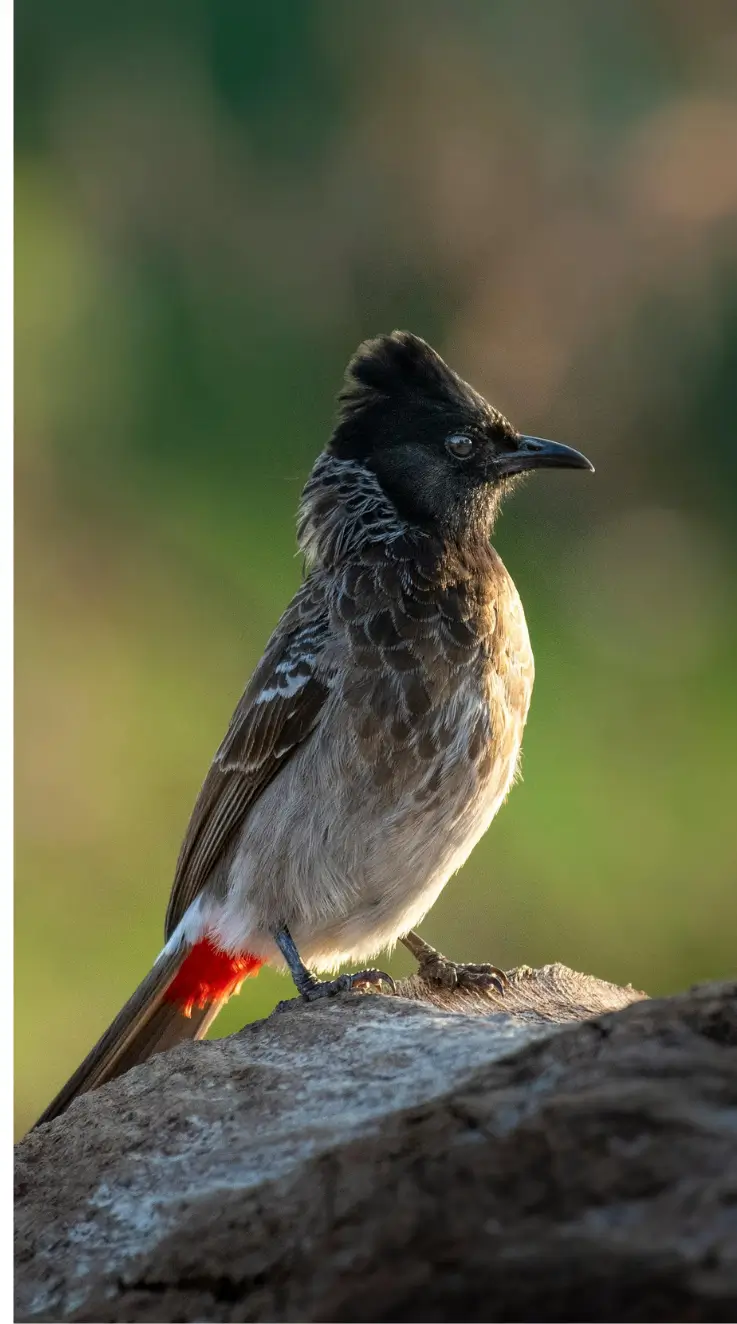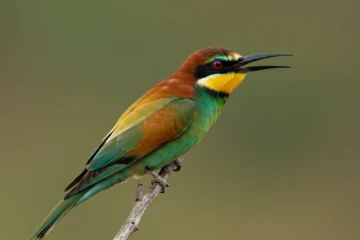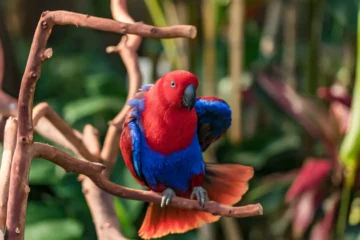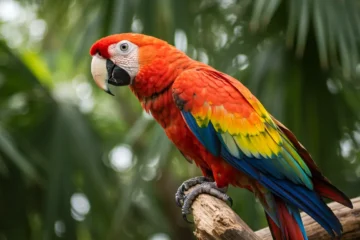The Red-vented Bulbul is a small songbird known for its black crest, dark body, and bright red patch under its tail. This bird often lives in gardens, parks, and urban areas of the USA.
It feeds on fruits, insects, and flower nectar. It’s considered invasive because it spreads quickly and competes with native birds in certain areas.
Images of Red Vented Bulbul
Price of Red Vented Bulbul
A Red Vented Bulbul usually costs between $200 to $500, depending on age and breeder reputation. Prices may vary based on availability and legal import restrictions.
General Characteristics of Red Vented Bulbul
This bird is rare in USA because it is imported from other continets to the parks and public places. Here are some general characteristics of this bird:
| General Characteristic | Features Specific to Red-vented Bulbul |
| Scientific Name | Pycnonotus cafer |
| Size | Around 8.3 inches long |
| Color | Brownish body, black head, and bright red patch under the tail |
| Distinctive Mark | Pointed black crest on the head |
| Call Sound | Loud, bubbly and sharp calls often repeated |
| Behavior | Hops on branches and often flicks its tail |
| Diet | Eats fruits, nectar, insects, and small invertebrates |
| Nest Type | Cup-shaped nest made of twigs and plant fibers |
Life Span of Red Vented Bulbul
A Red-vented Bulbul lives around 8–10 years in the wild. It can live up to 11 years in the captivity with proper care.
Interesting Facts About Red Vented Bulbul
There are some catchy facts regarding this amzing bird which can push you to visit the places inhabited by them. Here are some of them:
1. Adapts Easily to American Suburbs
The Red Vented Bulbul adjusts quickly to suburban areas in warmer U.S. states. It moves around backyards, parks, and single-story neighborhoods.
Its flexible nesting habits allow it to settle near human activity. It often uses garden plants to build nests. This adaptability helps it spread outside its native range.
2. Mimics Sounds from Its Environment
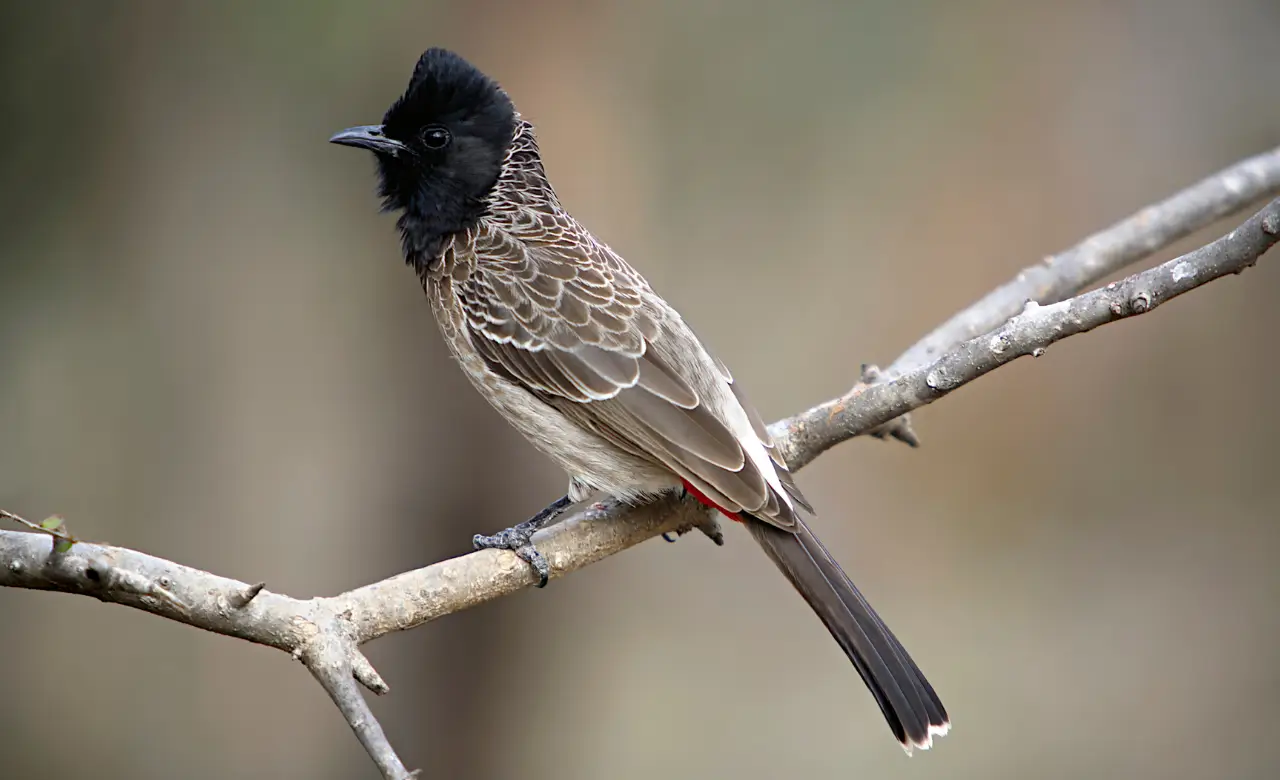
This bird often copies the sounds it hears regularly. This includes car alarms, ringtones, and even dog barks. It’s known to pick up urban sounds quickly.
Its mimicry mixes naturally with its own calls. This behavior surprises many backyard bird watchers.
3. Seed Spreader in Non-Native Ecosystems
The Red Vented Bulbul feeds on fruits and berries. It unknowingly spreads seeds across large areas during eating. It helps both invasive and native species to grow. This makes it an accidental agent of ecological change.
4. Nests Close to Human Residencies
This species often nests in unexpected spots around homes. Mailboxes, light fixtures, and even hanging flower pots attract it. These birds are not shy around people.
Their presence is more frequent during warm months. They prefer soft nesting materials like paper, cloth, and twine.
5. Aggressive Toward Other Bird Species
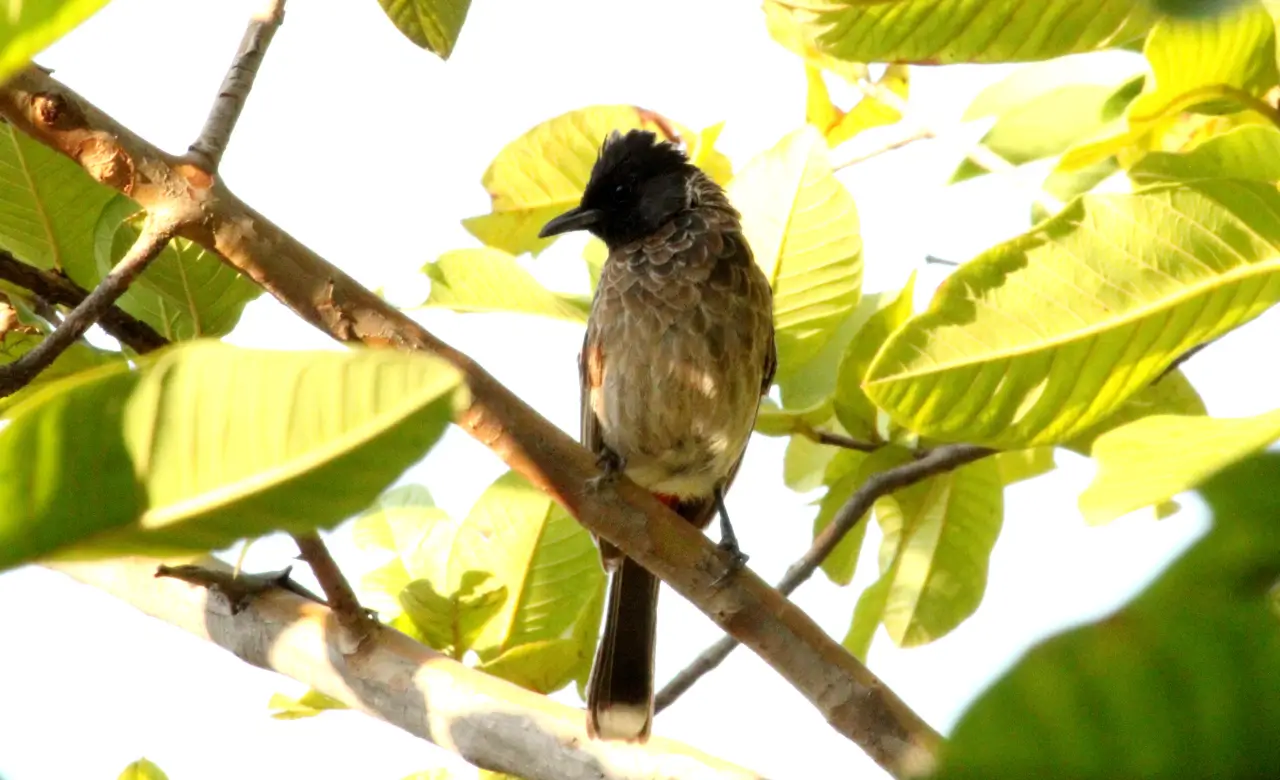
Red Vented Bulbuls are territorial and bold. They chase off other birds from feeders and nesting areas. This aggressive behavior is rare for a bird of its size.
This bird has been observed displacing native species like the Northern Cardinal. This creates concern among bird conservation groups.
6. Feeds on Garden Pests and Small Insects
This bird doesn’t just eat fruit but it also eats caterpillars, beetles, and small bugs. These eating habits makes it a good garden pest control. Homeowners have seen fewer pests with these birds around.
Its mixed diet supports it year-round. This gives it an edge over more selective birds.
7. Appears in Hawaiian Cultural References
This bird shows up in local music and storytelling despite that fact that it is not native to Hawaii. Residents often mention it in songs and poems.
Its loud calls and visible behavior make it easy to recognize. It holds symbolic meanings in modern Hawaiian culture.
8. Recognizes Human Voices and Patterns
Red Vented Bulbuls can associate human presence with food. Some begin to appear regularly when specific people come outside. This habit resembles behavior seen in crows or pigeons.
They return to spots where they’ve been fed. Their memory and pattern recognition are unusually sharp.
9. Distinctive Mohawk-like Head Crest
Its feather crest stands upright like a small mohawk. This feature helps birdwatchers identify it easily. The crest also rises when the bird feels alert or excited.
It gives the bird a spiky form when exposed to bright sunlight.
10. Competes with Native Pollinator
This bird often feeds on nectar, just like hummingbirds. It interferes with native pollinators of the surroundings. It drinks from ornamental flowers and garden plants.
This feeding reduces nectar availability for bees and hummingbirds. The effect is small but noticeable in certain gardens.
11. Wide Range of Calls
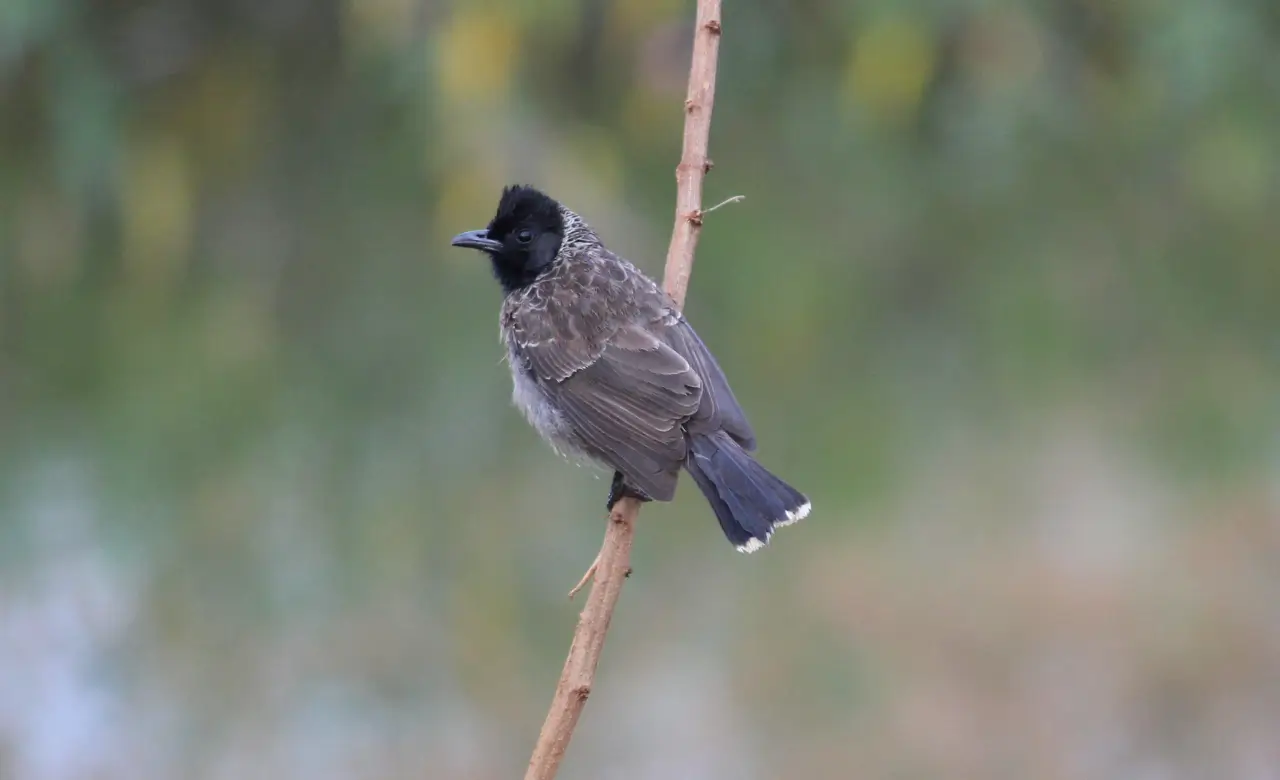
The Red Vented Bulbul uses over a dozen types of calls. Each one signals a different mood or situation. The bird watchers record warning calls, mating chirps, and contact sounds.
These vocalizations can vary between regions. That makes it an ideal bird for audio tracking studies.
12. Survives Urban Heat Islands
This species tolerates high urban temperatures. It remains active while others hide the cities with heat island effects. Its dark feathers absorb and regulate heat efficiently.
That gives it an edge in cities like Phoenix or Miami. This tolerance for heat is rare in small birds.
13. Forms Long-Term Pair Bonds
Mated Red Vented Bulbuls often stay together for more than one season. They share nest-building and chick-feeding duties. Couples are seen reusing the same nest location.
Their cooperative parenting style increases chick survival rates. This behavior reflects a strong social structure.
14. Eats Human Food from Trash
This bird checks the garbage bins and snack areas. It eats bread crumbs, rice, and sugary foods. It also visits bird feeders with fruit slices or seeds.
This diet change helps it adapt to human-dominated environments. The behavior raises concerns about diet quality and overpopulation.
15. Spreads Rapidly in Warm U.S. Regions
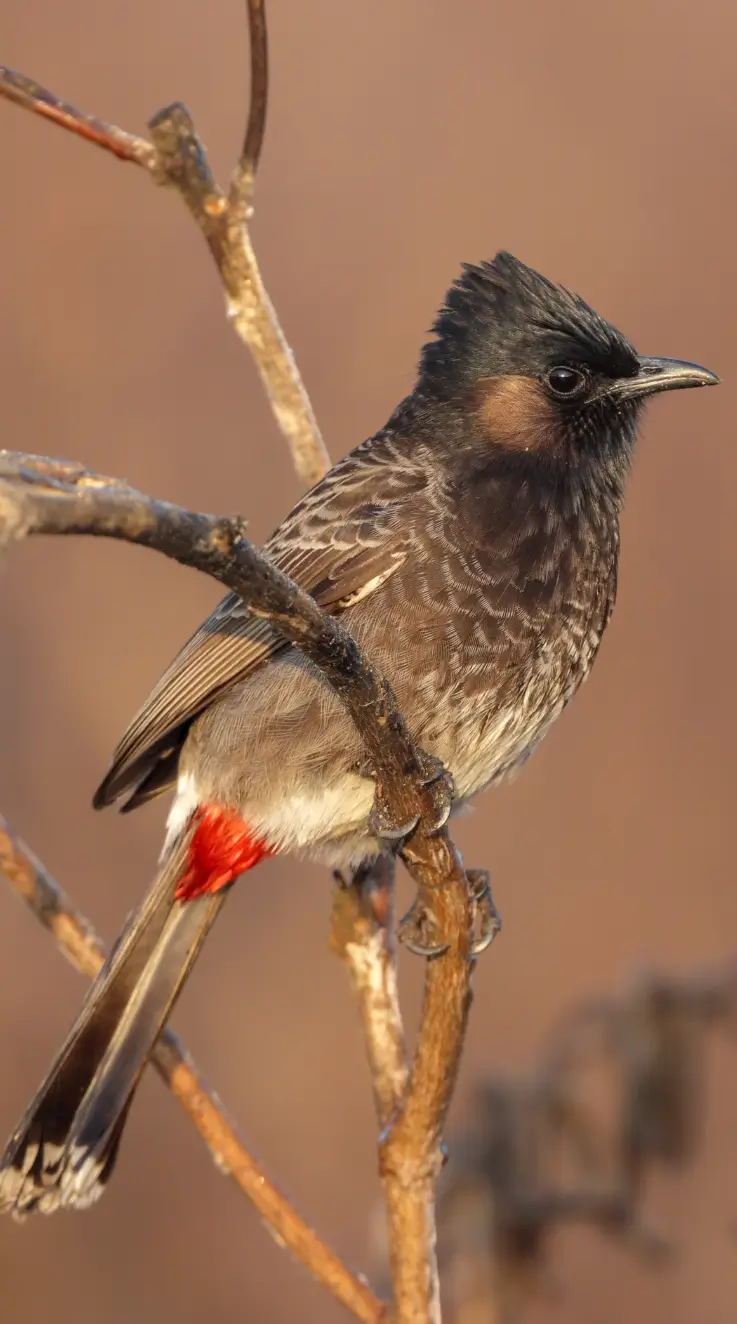
The bird’s population grows quickly where winters are mild. It reproduces efficiently due to long breeding seasons. Local governments have even listed it as invasive in certain areas. Its spread continues despite control efforts.
16. Interacts with Domesticated Animals
Some pet owners report bulbuls interacting with cats or small dogs. These birds often stay just out of reach. They tease or alarm house pets, especially during nesting season.
This behavior draws attention from homeowners and makes the bird memorable. It reflects boldness not common in wild birds.
17. Favors Red and Yellow Colored Objects
The Red Vented Bulbul is attracted to bright colors. Gardeners notice that red flowers or fruits draw them in. They also peck at toys or cloth in these shades.
This visual preference shapes how people set up feeders or gardens. It helps in observing or redirecting their activity.
Sightseeing of Red Vented Bulbul
This bird is native to Asian regions and is seen only in the parks and gardens of the USA. Here are some places where these birds can be seen:
| Location | State in Which it is Located |
| Oahu | Hawaii |
| Maui | Hawaii |
| Los Angeles | California |
| San Diego | California |
| Miami | Florida |
Best Tips to Get Good Clicks of Red Vented Bulbul
Here are some tips to get good clicks of this fascinating birds:
-
Wait for early morning light to capture the colors clearly without harsh shadows.
-
Use a zoom lens from a distance to avoid scaring it away while still getting sharp close-up shots.
-
Focus on fruit trees or backyard feeders where these birds often rest.
-
Keep your camera steady using a tripod since the bird moves quickly between short flights.
-
Try burst mode to catch its fluffed feathers or head tilt before it hops to a new branch.
The Red Vented Bulbul catches the attention of public in areas like public gardens due to its attractive and blod nature. This bird quickly adapts to the environment even where humans are populated. This bird is quite energetic and often competes with other birds living in its surroundings.
FAQs
1. Can you find red-vented bulbuls in the USA?
Yes, red-vented bulbuls have been spotted in parts of Florida and Hawaii.
2. Why is the red-vented bulbul considered invasive in the USA?
They damage fruit crops and compete with native birds which makes them a threat to local ecosystems.
3. Is it legal to keep a red-vented bulbul as a pet in the USA?
No, keeping or transporting red-vented bulbuls is restricted under federal and state invasive species laws.

